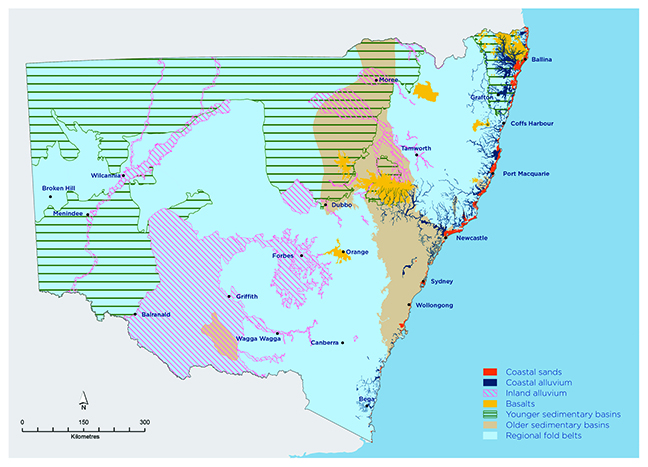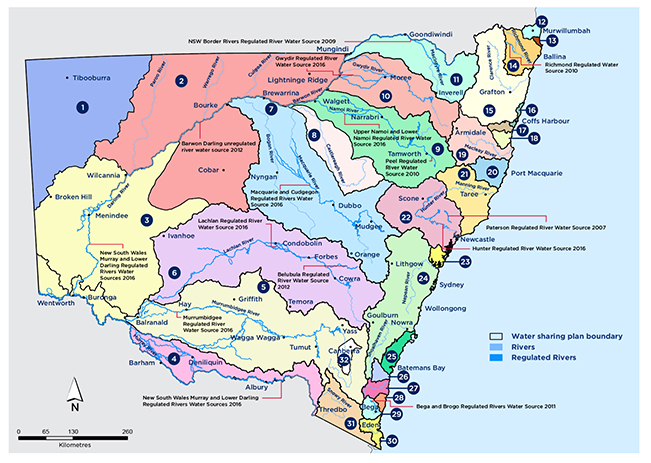Water in NSW is managed and shared according to a framework of rules, rights and entitlements, with limits in place to protect this valuable resource.
Water management is complex. It involves water, planning and environmental laws and policies, statutory rules and plans about sharing water, trading in water entitlements and water allocations, the operation of public and private infrastructure, and a range of decision-making, monitoring and enforcement agencies. It also extends across state boundaries.
Water management in NSW covers approximately 58,000 km of rivers and major streams:
- West of the Great Dividing Range, long, slow moving rivers flow westward across flat landscapes, with some running through to the ocean at the mouth of the Murray River near Adelaide (generally long, low gradient inland rivers).
- East of the Great Dividing Range, the terrain is steeper and the climate is generally wetter with faster flowing rivers that run east to the ocean (short, high gradient coastal streams).
Some of these river systems are regulated (controlled by major publicly owned dams or weirs). In these systems, water licence holders can order water from the dam and then take water from the river according to their licences.
In unregulated rivers and streams, water users are reliant on natural water flows and rainfall. In some systems, flood waters are harvested from the floodplain.
Groundwater is also a valuable resource for NSW, supplying 20-30% of all water needs. Figure 10 shows a simplified picture of groundwater resources in NSW and Figure 11 shows major regulated rivers and unregulated river water sources.


| Legend: | |
|---|---|
|
|